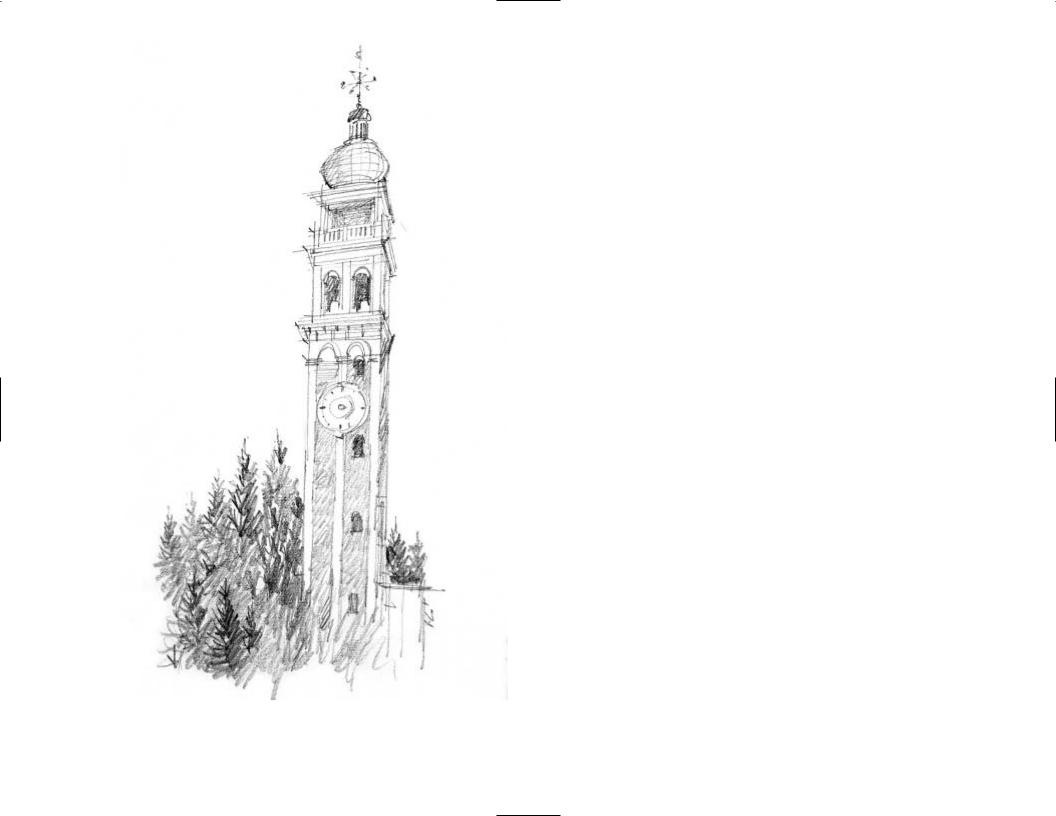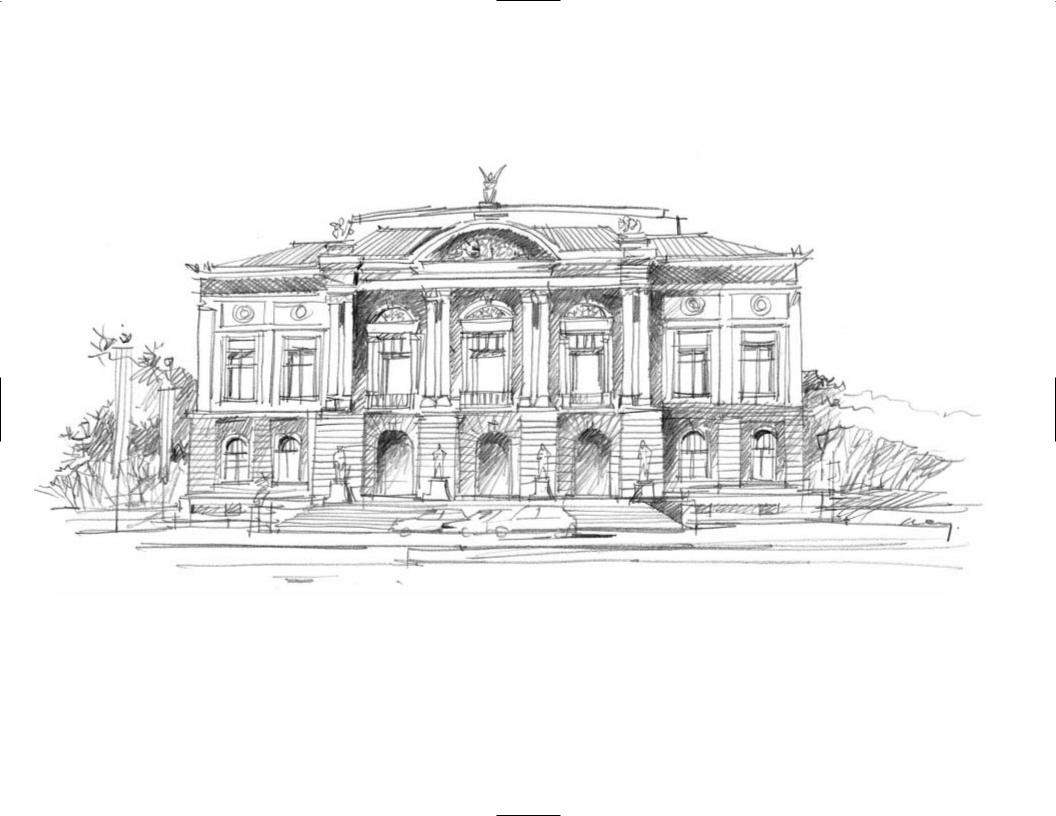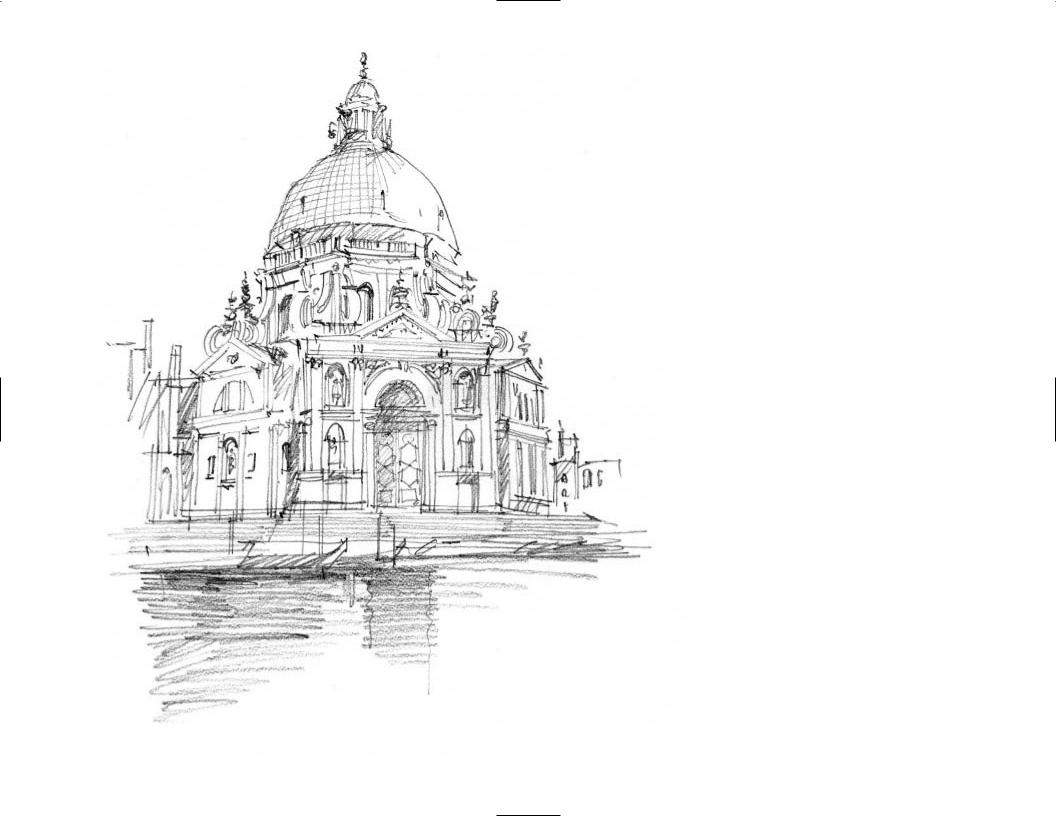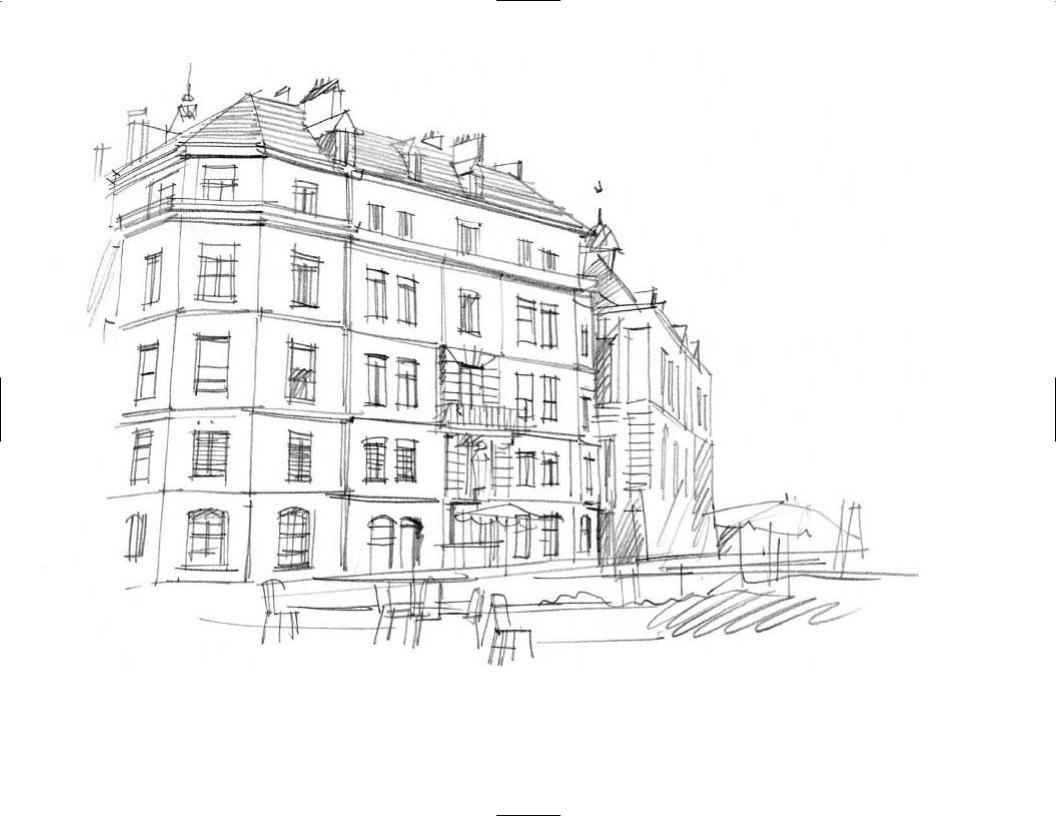
- •CONTENTS
- •PREFACE
- •Pencils
- •Papers
- •Accessories
- •Holding the Pencil
- •Pressure
- •Movement of the Hand
- •Lines and Strokes
- •Introduction
- •Observation and Recording
- •Landscape Sketching
- •Trees
- •Trees in the Foreground
- •Trees in the Background
- •Landforms
- •Water
- •Architecture
- •Sketching the Cityscape
- •SKETCHING FROM MEMORY
- •EXAMPLES
- •INDEX

Architecture
Drawing buildings can be a lot of fun. Basic building form is somewhat rectangular in shape and it modulates light and shadow more vividly than landscape does. Because of the angular relationship between the planes, the tonal contrast between them is sharp and strong. Vertical planes include all the walls, columns, windows, gateways, doors, etc. Horizontal planes include ceilings, floors, terraces, tabletops, flat roofs, and minor horizontal surfaces. A pitched roof is an inclined plane, and the inside of an archway is a slightly curved plane. These planes come together to create spaces. Depending on the direction of the sun, one or more planes may be in sunlight while the opposite sides of the same planes are in shade. Similar planes also cast shadows, and the tonal values of the shadows are generally darker than those of the shaded planes. A good sketch is the result of looking for ways to develop a meaningful pattern and manipulating the various tonal values. For example, the details and pattern of the masonry of a very interesting house may have to be sacrificed if the plane happens to be in direct sunlight, as it is sometimes more important to establish a strong tonal contrast than to show the details.
Tower in Venice, Italy; #2 pencil
63

Geneva, Switzerland; #2/HB pencil
64

Bear in mind that texture and pattern play a very important role in the sketching of a building. Patterns are used to suggest materials and methods of construction. They are sometimes used as tonal fillers to cover a void, perhaps a blank wall. The purpose is to use them strategically to clarify the different layers of planes and articulate the three-dimensional quality of the object. Most of the patterns are made up of different strokes that are drawn in many directions, from parallel lines to cross-hatching. The key is to follow the direction of the plane while avoiding obvious consistency and dullness. Always use some diagonal pattern to break up the monotony, and liven up the situation by reserving some strong white planes for contrast. Use dark shadow to exaggerate the depth of the space and to enhance the readability of the subject.
Church in Venice, Italy; #2 pencil
65

Street scene in Basel, Switzerland; #2/HB pencil
66
